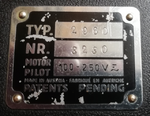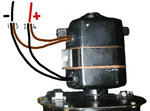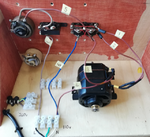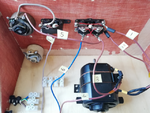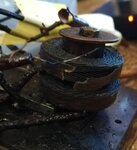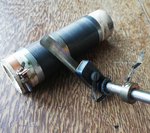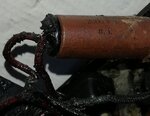crysotyle
Junior Member level 2

I have a motor on a 1930's projector, the plate on the projector says 100 - 250 v AC and DC, the motor has stamped on it 100/50 and has four wires two for the brushes and two for the stator. I have tested the motor on an old laptop supply which puts out 19v DC and it worked great, albeit a bit slow. What voltage is needed on both the Stator and the Brush wires to make it run correctly. Both the stator and the brushes were wired to the 19v DC. The motor is revisable which worked when tested.



